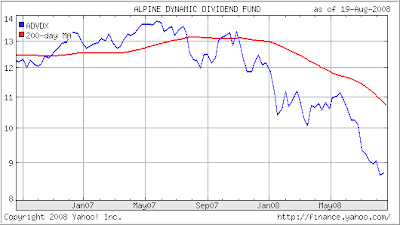 Whenever a major event is shaping up, such as the current Olympic Games or the upcoming elections, investors seem to set their sights on these milestones as a basis for making decisions. I have heard arguments like “I’ll hold my China ETF till after the Olympics, and then I’ll sell,” or “I wait till after the elections, and then I’ll buy,” or similar points of view.
Whenever a major event is shaping up, such as the current Olympic Games or the upcoming elections, investors seem to set their sights on these milestones as a basis for making decisions. I have heard arguments like “I’ll hold my China ETF till after the Olympics, and then I’ll sell,” or “I wait till after the elections, and then I’ll buy,” or similar points of view.
Sure, while milestones like these may or may not affect the markets, using them blindly as a guide is an exercise in futility. As MarketWatch points out in their article “Money managers size up post- election economy,” everyone is trying to get an early edge by attempting to figure out what may be the next hot investment item in order to get a head start.
Let’s listen in:
A clichéd view is that a Republican president helps sectors such as defense and healthcare and a Democratic president is good for, well, not much. The reality, of course, is more complicated that that – for instance, markets typically perform better during Democratic administrations than when a Republican is in the White House.
“It’s amazing that with the election as close as it is, we have so few policies that we can bank on,” said Mark Bavoso, head of U.S. asset allocation at Morgan Stanley Investment Management.
Part of this is because both candidates are veering away from policies that typically define their parties and moving more to the center. It’s also because, said Bavoso, that in a turbulent year neither man wants to corner themselves with their promises.
…
“Uncertainty from the election has been one factor that’s weighed on the markets,” said Brian Levitt, corporate economist at OppenheimerFunds, Inc. He added that, historically, markets prefer one party in the White House and one in Congress. “Free markets like logjam in government,” he said, because it usually means less regulation.
Church said that there’s one fact that faces the country regardless of who wins: George Bush’s legacy. “Bush came in with a budget surplus and he’s leaving a budget deficit,” he said.
And it’s likely the deficit will only increase under a new administration — the Tax Policy Center estimates that under Obama’s plans tax revenues will reach 18.3% of GDP in the next decade, while McCain’s plans will bring in 17.6% of GDP. But even at current levels, spending will account for 19.7% of GDP. The difference of 1%-2% doesn’t sound like much, but GDP over the next 10 years will amount to $185 trillion.
Bavoso said he believes the results of Congressional elections will be just as important as who wins the presidency. Bob Doll, global chief investment officer of equities at BlackRock Inc., said that the biggest question is whether the Democrats reach the magic 60 number in the Senate. With 60 votes, the Democrats would be able to force legislation through the upper chamber regardless of who is president.
Expect a bigger tax bite under a new administration, though the pace and extent of the rises will depend on who wins. Despite McCain’s tax-cutting promise, money managers predict that a Democratic majority in Congress all-but-guarantees the Bush administration’s tax cuts will expire in 2010. In other words, expect higher capital gains, dividend and income taxes by 2011 at the latest.
Doll says that both candidates will raise taxes, and most likely before the expiration date. As Bavoso pointed out, McCain will still need a package that meets the approval of a heavily Democratic Congress.
There you have it. Nothing is certain and neither potential outcome can tell you for sure which sectors might be positively affected by either candidate. It’s all a wild guessing game because the winning candidate will have to face certain realities after being elected that might directly oppose his pre-election (empty) promises.
Whatever the winning candidate decides to do to what extent is simply an unknown as is how Wall Street will react. However, any reaction will be reflected in the underlying trends, which I can measure.
That will give me an opportunity to determine which (domestic/sector) trends are breaking out to the upside (above their long-term trend lines) and will provide me then with an opportunity to take invested positions accordingly. Trying to make that assessment now without cause is simply speculation.
 As I elaborated in yesterday’s post, many readers seem to focus on future events trying to evaluate now as to what the best course of action for their portfolios might be, should this event actually come to pass. Here’s what reader Jerry had to say:
As I elaborated in yesterday’s post, many readers seem to focus on future events trying to evaluate now as to what the best course of action for their portfolios might be, should this event actually come to pass. Here’s what reader Jerry had to say:





